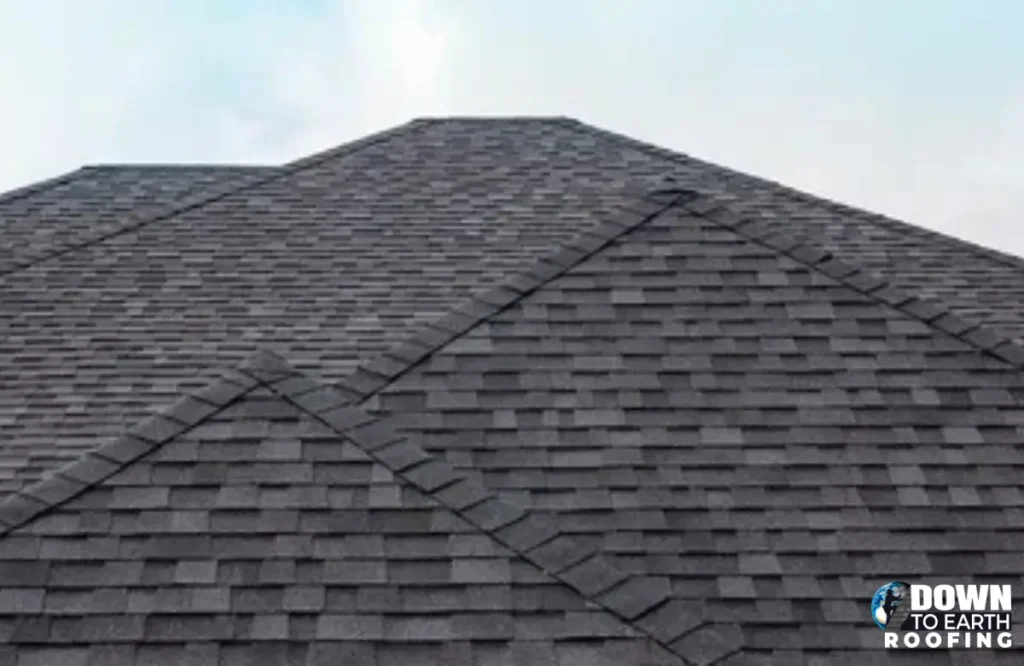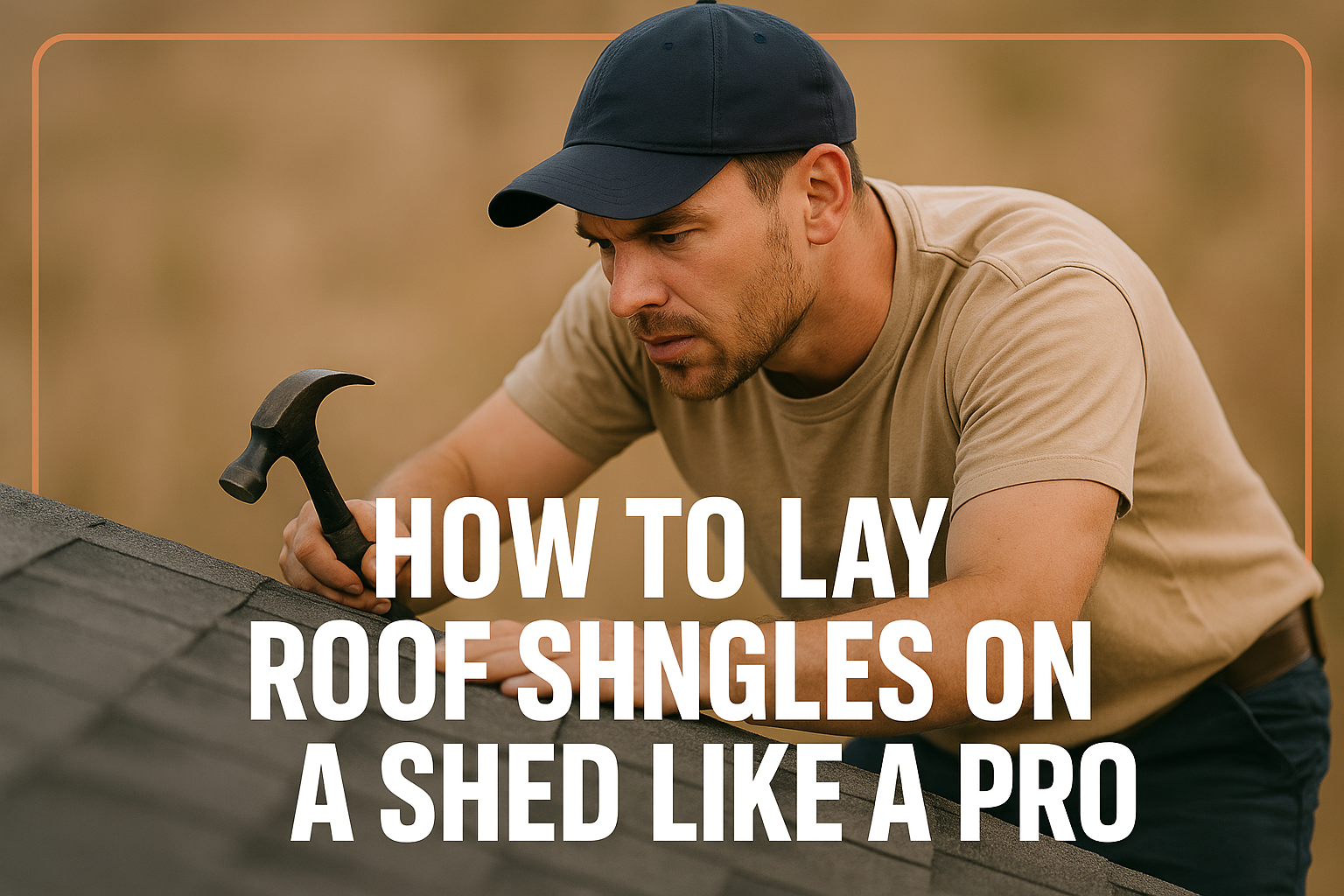Adding shingles to your shed roof is one of those projects that looks tougher than it really is. With a bit of patience, the right materials, and some guidance, you can give your shed a durable, professional-looking roof that keeps out rain, snow, and heat for years to come.
Learning how to lay roof shingles on a shed doesn’t just save money it also gives you the satisfaction of completing a real home improvement project on your own. Whether you’re building a brand-new shed or replacing old, worn-out shingles, this guide will walk you through everything you need to know to get it done right.
Why Proper Shingle Installation Matters
Shingling may appear as a very simple task, yet it is the details that do count. When well-built shingles are used, your shed will have lasting protection against water destruction, water leaks, and rot. On the contrary, poor installations may result in trapped water, shingles that might have curled, and subsequent costly repairs in the future.
Here’s why proper shingle installation is so important:
- Weather protection: The shingles are overlapped to direct water to flow off the roof rather than leaking.
- Durability: Properly installed roofs have a life of 20-25 years without that need to maintain them much.
- Aesthetic appeal: Your shed is made to look nice and neat with neatly laid shingles.
- Energy efficiency: A closed roof is useful to manage the temperature in the shed.
It takes time to properly install your shingles, whether it is in your garden shed, tool shed or your workshop so that your structure will remain safe and sound all through the year.
What You’ll Need to Shingle a Shed Roof
So we will first take the essentials before we get down to roofing a shed. The preparation of all things in advance makes the work quicker and easier.
Materials You’ll Need:
- Asphalt shingles (the number depends on your shed’s size)
- Roofing nails (galvanized preferred)
- Roofing felt or underlayment
- Drip edge (for eaves and rakes)
- Roofing adhesive or cement
- Roof ridge caps (or extra shingles for trimming)
Tools You’ll Need:
- Roofing hammer or nail gun
- Utility knife
- Measuring tape
- Chalk line
- Ladder
- Safety gloves and goggles
After these are prepared you can now start laying your shingles like a professional.
Contact Us

How to Lay Roof Shingles on a Shed
This is where the process lies. These are the steps that you should follow to make sure that your shed roof is not only good but also durable and able to withstand weather conditions.
Step 1: Prepare the Roof Deck
The roof deck should be clean, dry and smooth before the installation of the shingles. Eliminate any ancient nails, pieces of rubbish or broken plywood. Looking at the reshingle shed roof, find soft spots or rotten and substitute rotten wood.
Pro Tip: It works best with exterior-grade plywood or OSB–that provides good support to shingles.
Step 2: Install Drip Edge
Drip edge is a narrow metal strip that drives water away at the edges of the roof.
- The drip edge along the eaves should be nailed in the first step and the overlap should be at least 1 inch.
- Install drip edges on the rakes (sloping sides) once the underlayment is applied.
This is a mere measure that will ensure that your shingles do not get water under them and it does not rust or ruin your shed or the frame.
Step 3: Roll Out the Roofing Underlayment
Underlayment acts as a waterproof barrier beneath the shingles.
- Roll it horizontally, starting at the bottom edge of the roof.
- Overlap each new row by 2–3 inches.
- Nail it down with roofing nails or staples.
The layer prevents the entry of moisture, particularly when there is heavy rain or melting snow. Self-adhesive underlayment is much more preferred by many homeowners because it is easier to seal with and especially on smaller shed roofs.
Step 4: Snap Chalk Lines for Guidance
A chalk line will be required to achieve that professional straight-row look.
- Measure up 5 inches above the edge of the roof (that is where the row of the first shingles will begin).
- Snap a horizontal line across.
Keep adding new lines that are 5 inches all the way until you have completed a row of the shingles. This makes it have a constant walking distance and a clean up.
Step 5: Lay the Starter Strip
The starter strip (or first layer of shingles) is vital in stopping the infiltration of water into the roof at the eaves.
Either you can purchase a ready-made starter strip or cut the tabs off normal shingles.
- Line the starting strip with the lower section of the roof.
- Attach each piece of nail approximately 3 inches away from the edge spacing the nails evenly.
This roof establishes the atmosphere of all the shingles on top of it.
Step 6: Begin Installing Shingles
And now it is the good bit -hanging shingles up a shed!
- Beginning at the bottom line and proceeding upwards.
- Line first full shingle with starting strip.
- Secure it with four nails, approximately 1 inch above every opening.
- The successive rows are to overlap half the height of the previous one (approximately 5 inches in the case of standard shingles).
Pro Tip: Splinter your shingle seams so as not to make water highways–lop half a tab off the first shingle in each row.
Move over the roof, tracing your lines of chalk so that it is all straight.
Step 7: Trim Edges and Overhangs
When shingles extend beyond the roof edge, trim them neatly with a utility knife. Make sure there’s about a ¼ to ½ inch overhang to allow water runoff without exposing the wood underneath.
Step 8: Cap the Ridge
Once you reach the peak, cover it with ridge caps (or cut shingles into smaller pieces).
- Overlap each cap by about 5 inches.
- Nail them down securely on both sides of the ridge.
The ridge cap seals the roof and gives your shed a finished, professional look.
Step 9: Inspect and Seal
Walk around your shed to make sure everything looks uniform and secure. Apply roofing adhesive to any loose edges or nail heads that might be exposed.
Congratulations! You’ve just learned how to lay shingles on a shed roof like a true pro.
Conclusion
It is not only a DIY project but a practical skill that one can learn as a homeowner, as he or she has to install roof shingles on a shed. A shed roof can be built in a step by step procedure with all the necessary materials, careful preparation, and good materials to make it look professional and still stand decades.
Be it in an effort of replacing the old shingles or in an effort of putting new ones down, this guide will have you astounded at how well your shed will be once you complete the shed.
To explore more roofing tips, visit Down To Earth Roofing your trusted local roofing experts.
FAQs
1. How many shingles do I need for a shed roof?
Measure your shed’s roof area and divide by the coverage listed on your shingle package. Add 10% extra for trimming and waste.
2. Can I install shingles directly on old shingles?
It’s not recommended. Always remove old shingles before installing new ones to ensure proper adhesion and ventilation.
3. Do I need underlayment for a shed roof?
Yes, even small sheds benefit from underlayment, which adds an extra layer of moisture protection.
4. How long does it take to shingle a shed roof?
For an average 8×10 shed, expect to spend 4–6 hours, depending on experience and weather.
5. What’s the best way to cut shingles?
Use a sharp utility knife and a straight edge for clean, precise cuts.


